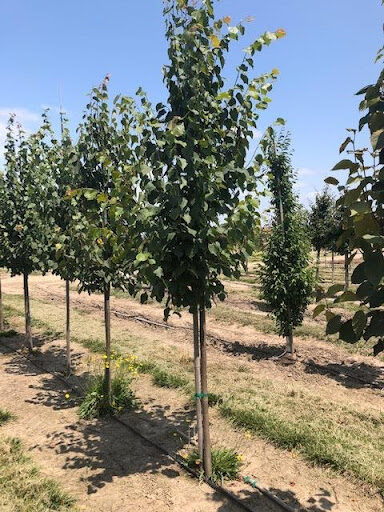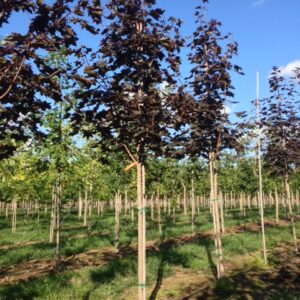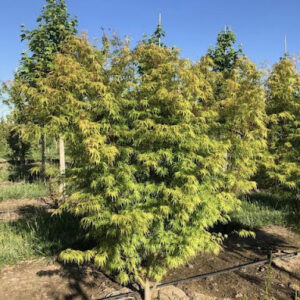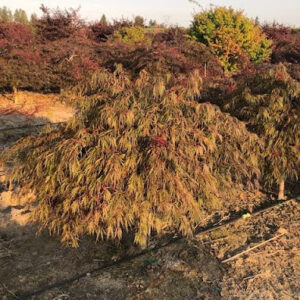Tilia americana McKSentry – American Sentry® Linden
$250.00
Botanical Name: Tilia americana McKSentry
The American Sentry Linden (Tilia americana McKSentry) is a useful tree to plant in smaller landscapes due to its narrow and predictable growth habit. This linden tree also works well as a street tree or planted in city median strips, as it has a high canopy clearance of 7 feet. It is a small to medium sized deciduous tree with a pyramidal shaped canopy and upright, dense, and uniform branching. It is native to the midwest and grows to a height of 40-45 feet with a spread of 25-30 feet.
The leaves of this tree are large – 4-8 inches long. They are an attractive heart shape and a dark shade of green with lighter undersides and coarsely serrated margins. In the fall, the foliage turns a spectacular pale golden yellow. The distinctive silvery gray bark is an attractive feature, particularly on juvenile trees.
The American Sentry Linden produces clusters of yellow, spicy scented blooms in the summer. The fruits are inconspicuous.
No serious disease or insect problems. This tree has some resistance to the Japanese beetle, which can decimate many plants. Tolerates pollution. Attractive to butterflies.
Product Dimensions
The purchased tree will be within the ranges below. If you require a specific size, please call us at
(503)585-8337
Please review Product shipping dimensions to ensure size of vehicle used for pickup of tree is sized correctly.
Click here for more information.
- Caliper Range p
- 1 3/4"-3"
- Height Range p
- 10-14'
83 in stock
| Shape |
Pyramidal
|
| Flower Color |
Yellow
|
| Flowering Time |
July
|
| Fall Color |
Pale Yellow
|
| Growth Rate |
Fast, Moderate
|
| Uses |
Accent Tree, Park Tree, Shade Tree, Street Tree
|
| USDA Zones |
3, 4, 5, 6, 7, 8
|
| Mature Height |
40'-50'
|
| Mature Width |
20'-30'
|
| Exposure |
Full Sun, Partial Sun
|





